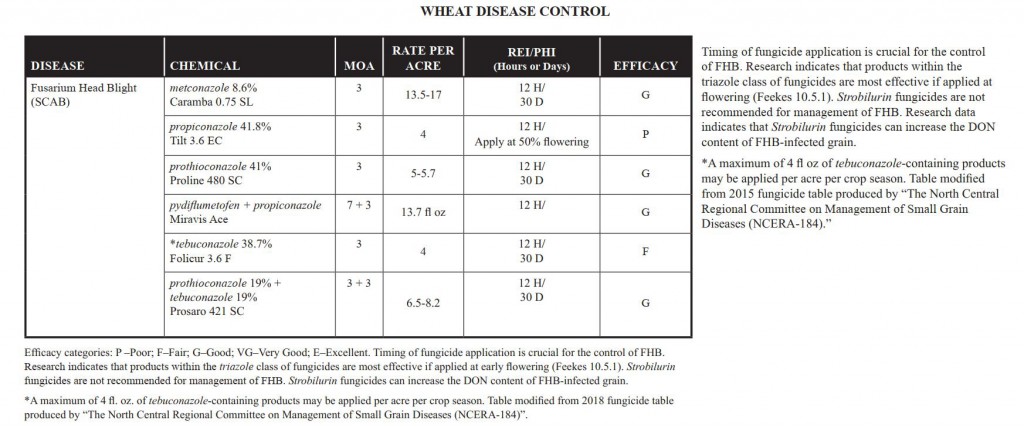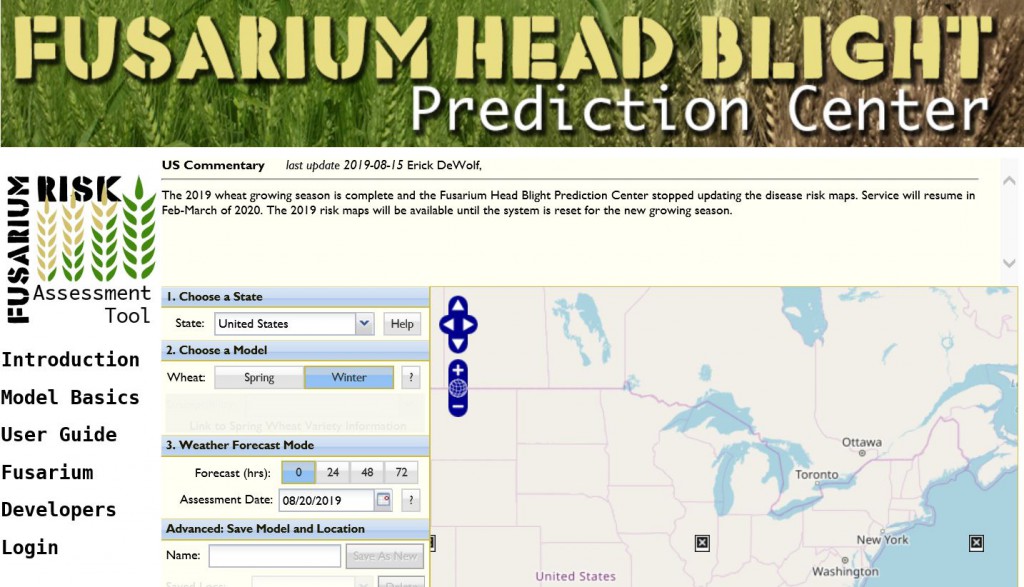Below is an update of the current small grain situation in Colquitt County.
Wheat: Wheat growers have been asking about how to manage Fursarim Head Blight (FHB). Over the next few weeks growers need to monitor the stage of development of their wheat crop. Late last week, the area wheat crop was ranged Feekes Stage 7 to 9. A great resource for determining growth stages in wheat can be found at https://sanangelo.tamu.edu/extension/agronomy/agronomy-publications/growth-stages-of-wheat/

The fungi that causes FHB can overwinter on crop stubble such as wheat, barley, and corn, and as soilborne inoculum. FHB is introduced into a field through infected seed or wind-borne inoculum. The fungus is spread rapidly by rain splash and wind. The head, and in particular the open female flower during anthesis (pollination), is most susceptible to infection by Fusarium spores. Some infection can occur during kernel development. Moist environmental (rain, irrigation, fog, and long evening dew periods) conditions favor spore (inoculum) production and infection. Recent models have suggested that three or more rain or irrigation events from anthesis until 3-5 days post-anthesis and temperatures ranging from 77 to 86 degrees
F (25 to 30 degrees C) will result in severe scab if inoculum is present and the variety is susceptible.
How do we manage this disease? FHB control using fungicides can be a challenge because of timing. Foliar applications with a triazol fungicide work best when applied at or within a week of early flowering. Strobilurin fungicides are not recommended for the management of FHB. Research from other states indicate that strobilurin fungicides can increase the DON content of FHB infected grain. Below are the recommended fungicides for the management of FHB, rates and efficacy. This information is from the UGA Pest Control Handbook.

Another interesting tool for the management of FHB is the Fusarium Head Blight Prediction Model. This model helps wheat producers predict the severity of this disease in their area. The model can be seen at https://www.wheatscab.psu.edu/

Another great resource for FHB is the publication Identification and Control of Fusarium Head Blight (Scab) of Wheat in Georgia https://extension.uga.edu/publications/detail.html?number=C1066&title=Identification%20and%20Control%20of%20Fusarium%20Head%20Blight%20(Scab)%20of%20Wheat%20in%20Georgia
Oats: There has been some reports of crown rust in area oats. Crown rust, caused by the fungus Puccinia coronata, is one of the most destructive diseases of oats. There are fungicide options and resistance varieties to manage this disease. Contact your local county agent about fungicide options.

Another disease that has been seen in Colquitt County has been Drechslera/Bipolaris (formely Helminthosporium) leaf spot on oats. According to Dr. Alfredo Martinez, UGA Small Grain Plant Pathologist, this disease is common on oats. The disease usually appear early in the season and it requires coldish weather but ceases later into the season as temperatures warm up and no chemical control is required.
Untreated seed and volunteer plants can be a source of inoculum. It is usually a minor problem in Georgia. The most important practice is to sample soil and maintain adequate levels of fertility. Soil potassium is critical for leaf spot management. Most reported leaf spot cases are directly related to low soil potash. Adequate amounts of Nitrogen are also essential for disease management. Crop rotation with non-hosts is recommended, fungicide seed treatment will reduce the disease incidence. The flag leaf protection is key for yield. If the infection is progressing up the plant and it is at or near flag leaf minus one or minus 2; should start thinking in applying a fungicide. Timing of fungicide application is getting pretty close if you decide to go ahead and making the decision of spraying. Below is an example of Drechslera/Bipolaris (formely Helminthosporium)

If you have questions about the crop situation in your area contact your local county agent.
